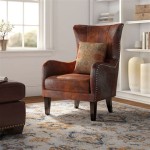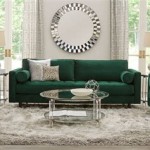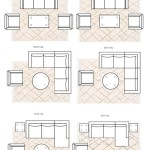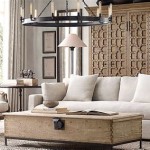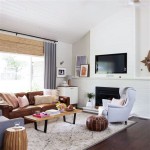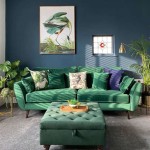Wall to Wall Carpet for Living Room: A Comprehensive Guide
Wall-to-wall carpeting in a living room offers a multitude of benefits, transforming the space in both functionality and aesthetics. Selecting the right carpeting, however, requires careful consideration of various factors, including material, style, color, and installation. This article examines the advantages, considerations, and selection process involved in choosing wall-to-wall carpet for a living room.
Enhancing Comfort and Ambiance
One of the primary reasons homeowners choose wall-to-wall carpet is its inherent comfort. The soft texture underfoot provides a cushioned surface, making the living room a more inviting and relaxing space. This is particularly beneficial in colder climates, where carpet provides insulation, reducing energy costs and creating a warmer environment. The tactile experience of walking or sitting on carpet contributes significantly to the overall ambiance of the room, fostering a sense of comfort and well-being.
Furthermore, carpeting acts as a sound absorber, dampening echoes and reducing noise levels within the room. This is crucial for creating a peaceful and tranquil living space, especially in apartments or homes with multiple occupants. The sound-dampening properties of wall-to-wall carpet can significantly improve the acoustic environment, minimizing distractions and promoting a sense of calm.
The visual impact of carpet cannot be understated. It provides a cohesive and unified look to the living room, binding the different elements of the space together. The color and texture of the carpet can dramatically influence the overall style and mood of the room, allowing homeowners to express their personal preferences and create a unique atmosphere.
Beyond aesthetic appeal and comfort, carpet offers safety benefits. It provides a slip-resistant surface, reducing the risk of falls, especially for children and elderly individuals. The cushioned nature of carpet also helps to minimize injuries in the event of a fall. This makes it a particularly appealing choice for families with young children or those concerned about the safety of their loved ones.
The selection of the appropriate carpet pile is crucial for comfort and durability. Pile refers to the density and height of the carpet fibers. A higher pile offers increased softness and cushioning, while a lower pile is generally more resistant to wear and tear. Homeowners must carefully consider their specific needs and priorities when choosing the appropriate pile height for their living room carpet.
Material Considerations: Choosing the Right Fiber
The material of the carpet fibers significantly impacts its durability, appearance, and maintenance requirements. Several types of carpet fibers are commonly used in residential settings, each with its own advantages and disadvantages.
Nylon is a synthetic fiber known for its exceptional durability and resilience. It is resistant to stains, wear, and crushing, making it an ideal choice for high-traffic areas like living rooms. Nylon carpets are also relatively easy to clean and maintain, making them a practical option for busy households. However, nylon can be more expensive than other synthetic fibers.
Polyester is another synthetic fiber that offers good stain resistance and a soft texture. It is generally less expensive than nylon, making it a budget-friendly option. However, polyester is not as durable as nylon and may be more prone to crushing and matting over time. This makes it a better choice for lower-traffic areas or for homeowners who prioritize affordability over long-term durability.
Olefin, also known as polypropylene, is a synthetic fiber that is exceptionally resistant to stains, moisture, and fading. It is often used in outdoor or indoor-outdoor carpets, but it can also be a viable option for living rooms, especially in homes with pets or young children. Olefin is relatively inexpensive, but it is not as resilient as nylon and can be susceptible to crushing.
Wool is a natural fiber renowned for its luxurious feel, durability, and stain resistance. It is a premium carpet fiber that offers exceptional warmth and insulation. Wool carpets are also naturally flame-resistant and hypoallergenic. However, wool is more expensive than synthetic fibers and requires specialized cleaning and maintenance. Wool carpets also tend to shed fibers, particularly in the initial stages of use.
Triexta, a newer synthetic fiber, combines the benefits of both polyester and nylon. It offers excellent stain resistance, durability, and a soft texture. Triexta carpets are also known for their resilience and resistance to crushing. While still relatively new to the market, triexta is gaining popularity as a high-performance, environmentally friendly option for residential carpeting.
The choice of carpet fiber should be based on a careful assessment of the homeowner's needs, budget, and lifestyle. Factors to consider include the level of traffic in the living room, the presence of pets or children, the desired level of comfort, and the budget allocated for carpeting.
Style and Color Considerations: Achieving the Desired Aesthetic
The style and color of the carpet play a significant role in defining the overall aesthetic of the living room. The choice of style and color should complement the existing décor and create the desired mood and atmosphere.
Berber carpet is a popular style characterized by its looped pile construction. It is known for its durability, stain resistance, and casual appearance. Berber carpets are often available in neutral colors and are a good choice for high-traffic areas. However, Berber carpets can be prone to snagging, especially in homes with pets.
Cut-pile carpet is another common style that features fibers that are cut at the tips. Cut-pile carpets offer a softer and more luxurious feel than Berber carpets. There are several variations of cut-pile carpet, including plush, Saxony, and frieze. Plush carpets have a dense, velvety surface, while Saxony carpets have a more defined, twisted yarn. Frieze carpets have a shaggy, textured appearance.
Patterned carpet features a design woven or printed onto the surface. Patterned carpets can add visual interest and personality to the living room. They are available in a wide range of styles, from traditional to contemporary. However, patterned carpets can be more challenging to clean and may not be suitable for all design schemes.
The color of the carpet can dramatically influence the perception of space and light in the living room. Lighter colors tend to make a room feel larger and brighter, while darker colors can create a more intimate and cozy atmosphere. Neutral colors, such as beige, gray, and off-white, are versatile and can complement a wide range of décor styles. Bold colors can add drama and personality to the room, but they may be more prone to fading and may not be as versatile as neutral colors.
It is essential to consider the existing color scheme of the living room when choosing the carpet color. The carpet should complement the wall color, furniture, and accessories. It is also important to consider the amount of natural light in the room. Darker colors may make a room feel gloomy if it lacks natural light.
Before making a final decision, it is advisable to obtain samples of different carpet styles and colors and view them in the living room under different lighting conditions. This will help to ensure that the chosen carpet style and color complements the existing décor and creates the desired aesthetic.
Ultimately, the choice of wall-to-wall carpet for a living room is a personal one. Careful consideration of the factors outlined above will help homeowners make an informed decision and select a carpet that meets their specific needs and preferences.

Wall To Carpet Area Rug Trends One Floor Home

Wall To Carpets All You Need Know Answered Tsar

Wall To Carpet Area Rug Trends One Floor Home

The Wall To Carpet Guide Everything You Need Know

Wall To Carpet Installation Why It Matters For Your Home

Designing With Carpet Couristan

11 Reasons To Love Wall Carpeting Again

Elevated Style For Your Wall To Carpet

Factors To Consider Before Choosing Wall Carpeting Canadian Home Style

The Wall To Carpet Guide Everything You Need Know

